Insulation Tips
What are the different types of roof insulation?
It’s easy to get lost in a shop when you don’t know what you’re looking for and there are too many options. Luckily, we’re here to help make things a little less complicated and to help you choose which roof insulation product is right for your home. Firstly, there is a large variety of roof insulation products manufactured today. These products vary in material type for example; glasswool, polyester, and rockwool, and product form such as; roof insulation batts, rolls, loose fill, and rigid foam boards. Each roof insulation product has its pros and cons, so make sure you do a little research beforehand, to ensure you are choosing the best insulation for your home.
Glasswool insulation
Glasswool insulation is a popular thermal roof insulation material that has been around for many years. In the last 10 years, manufacturing processes have drastically improved the durability and itchiness of the glasswool material. Many glasswool products are now claiming to be itch-free, robust and durable, lasting for the lifetime of your home.
Pros
- Cost-effective
- Non-combustible
- Made from recycled glass material
- Low – itch factor and easy to install
Cons
- Protective gear should be worn whilst installing
- Compression of the fibreglass material reduces its performance
Polyester insulation
Polyester insulation is a man-made synthetic product which is made from recycled PET plastic such as drink bottles. It is a strong and durable product that does not degrade over time. It is available in blankets, rolls and batts. The following polyester cheap roof insulation products available at Pricewise insulation include; Autex Greenstuf, and Bradford Polymax.
Pros
- Durable product
- Non-allergenic, non-irritant, non-toxic
- Environmentally friendly
Cons
- More expensive than Glasswool
- Will melt when exposed to open flame
Cellulose Insulation
Today, cellulose insulation is made from up to 85% recycled paper. It is heavily treated with chemicals such as boric acid, borax and ammonium sulphate. Cellulose roof insulation can be installed during the construction phase of your home or retrofitted to existing homes. Cellulose insulation can be blown in, wet or dry. If you are choosing to install cellulose roof insulation, it is recommended to achieve a minimum of R3.0 in this area. As cellulose insulation is treated with boric acid, this increases the fire resistance of the insulation and, reduces mould growth and increases insect resistance.
Pros
- Reduces amount of wasted paper and cardboard being dumped into landfills
- Generally cheaper than glasswool / fibreglass insulation
- Less itchy than other traditional fibreglass material
Cons
- Installation costs can be more expensive as it requires machine hire and basic training for installation.
- Dry-blown cellulose tends to sag and settles over time, which gradually reduces its R-value.
- Absorbs moisture more easily that other insulation material types.
Rockwool Insulation
Due to its minimal organic properties, Rockwool insulation is non-combustible and does not produce toxic smoke. Additionally, Rockwool is made from natural Basalt rock and Chalk, and can withstand temperatures of above 1000 degrees. Most commonly used as a firestop wall but can also be used as roof insulation.
Pros
- Sound proofing capabilities
- Great fire ratings
- Fire resistant
- Moisture resistant
- Acoustic performance is high
Cons
- Can irritate skin when installing
- PPE is recommended to be worm when installing this material
- Generally, more expensive than other bulk insulation materials
Sheep’s wool insulation
Sheep’s wool works in the same way as other insulation products, by trapping air between fibres within the wool. Wool is a poor conductor of heat, even more so than other insulation materials such as fibreglass and rockwool. Naturally crimped fibres help the wool batts to maintain shape and stability over time. Sheep’s wool insulation is said to have a higher R-value, when compared to other insulation products of the same thicknesses. It is a great roof insulation product that can last for the lifetime of your home.
Pros
- Non-combustible
- Biodegradable
- Sound absorption – reduces airborne noise, transmission sound and surface vibrations.
- Does not itch, and is easy to work with
Cons
- More expensive
- Sheep’s wool is either bonded together mechanically or with a polyester adhesive
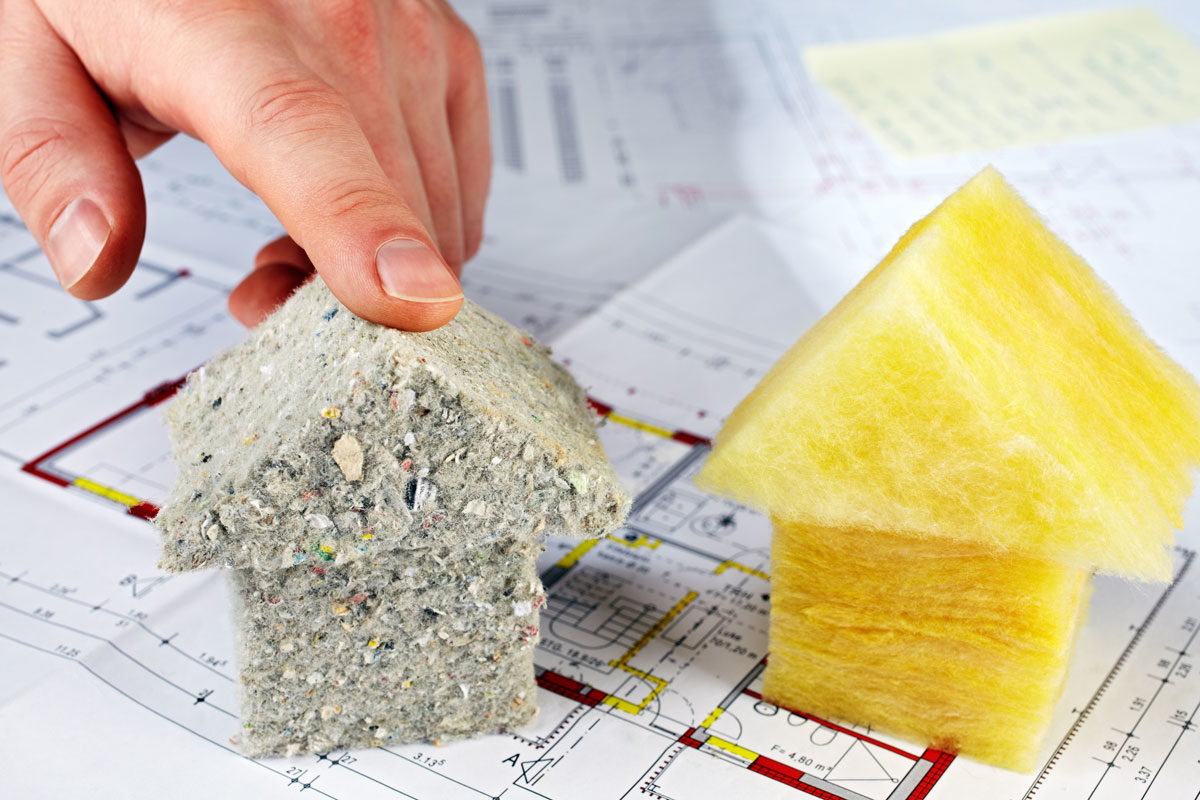
Summary of Roof Insulation Materials: (Low = L, Medium = M, High = H)
| Material | Application | Itch Factor | Thermal Resistance | Acoustic Properties | Fire-Resistance |
| Glasswool | Residential; walls (external & internal), ceilings, underfloor | M | H | H | M |
| Polyester | Walls (external & internal), ceilings, underfloor | L | H | H | M |
| Cellulose | Residential and commercial applications | M | M | M | M |
| Rockwool | Residential and commercial applications | M | M | M | H |
| Sheep’s Wool Insulation | Residential; walls (external & internal), ceilings, underfloor | L | M | M | H |
Different Forms of Roof Insulation
Insulation can come in a variety of forms to suite your specific needs. Below are a few of the most common roof insulation material forms used in both commercial and residential settings.
Blanket Roll Insulation
Insulation rolls are the commonly used form for roof insulation as they are most suited to installing large area. Insulation rolls can also be used as a top up layer in roof area. Start by rolling out the insulation from the outer corner to middle of the roof and manhole access. Use any of-cuts to insulation the smaller harder to reach places in your roof area.
Batt Insulation
Most common form of insulation is batt insulation. Usually available in 420mm or 580mm width and are pre-cut to fit between joists and studs. Remember when installing roof insulation batts, don’t leave any gaps which will compromise the effectiveness of the insulation. Roof insulation batts are easy to install as it is pre-cut, however if further cutting is required you can use any off-cuts in small spaces that are hard to reach.
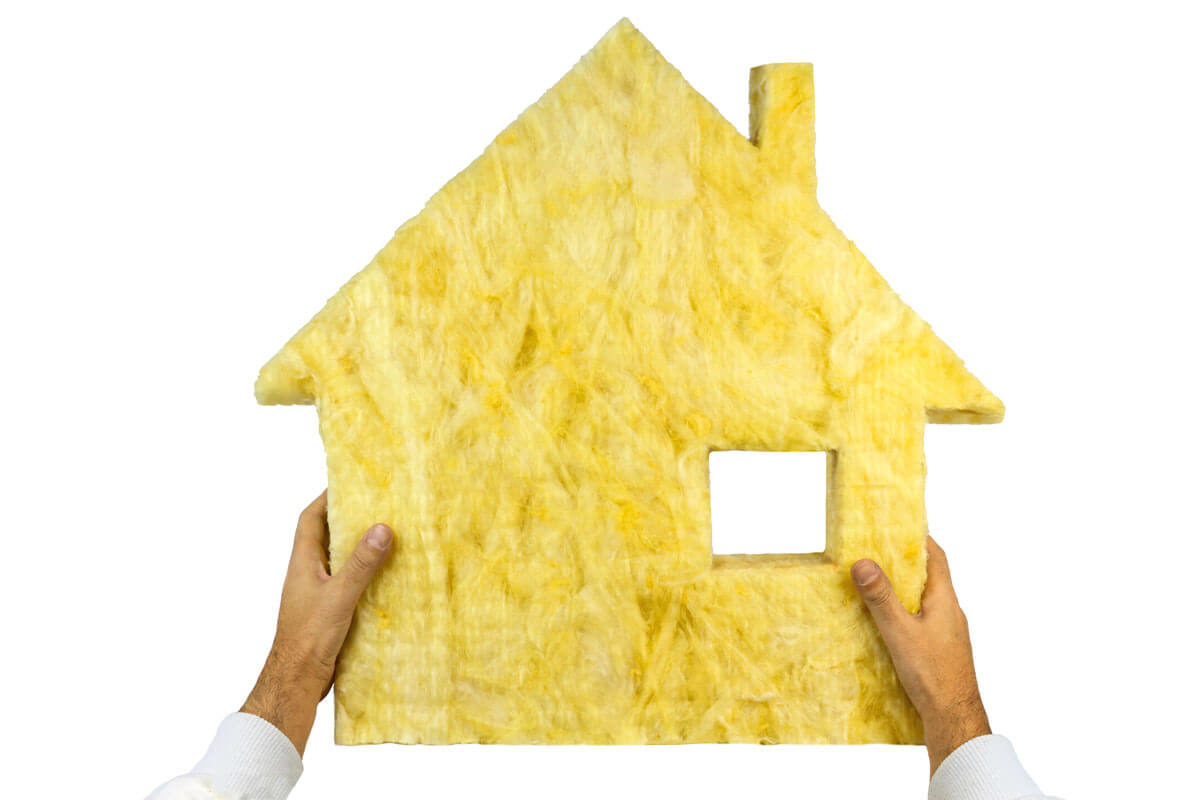
Rigid Board Insulation
Insulation boards can achieve high R-values with narrow thickness, whilst others have a foil outer layer that deflects heat. Insulation boards are rigid and durable and can be installed in the roof and ceiling area, including cathedral ceilings. All insulation boards reduce winter heat losses and summer heat gains, enabling comfortable indoor temperatures year-round.
Spray foam insulation
Polyurethane spray foam is the most commonly used material. As it has air-sealing ability, it minimizes risk of condensation, dampness, mould or corrosion. The polyurethane foam expands to fir perfectly the space in which is it being installed, it makes a great roof insulation product. Can be available in both open and closed cell sprays to suite your homes need.
Loose-fill insulation
Loose-fill insulation is material such as fibreglass, cellulose, and rockwool that is kept in a loose form and blown in to the desired area. These areas include; wall cavity, roof area, underfloor area, etc. Loose fill insulation can be installed into any area and space, it is great for those hard to reach places. Installing loose-fill insulation requires special equipment so the overall installation cost may be higher, especially if a qualified installer is involved.
Structural Insulated Panels (SIPs)
SIPs are designed for residential and light commercial applications. They are made of an insulating core such as expanded polystyrene EPS or polyisocyanurate PIR and on either side a structural facing such as oriented strand board OSB. They can form roof, walls and floor areas, as it is available in varying thickness. SIPs can be constructed to meet most buildings designs, can save you construction time, reduce overall project costs as well as reduce labour costs.



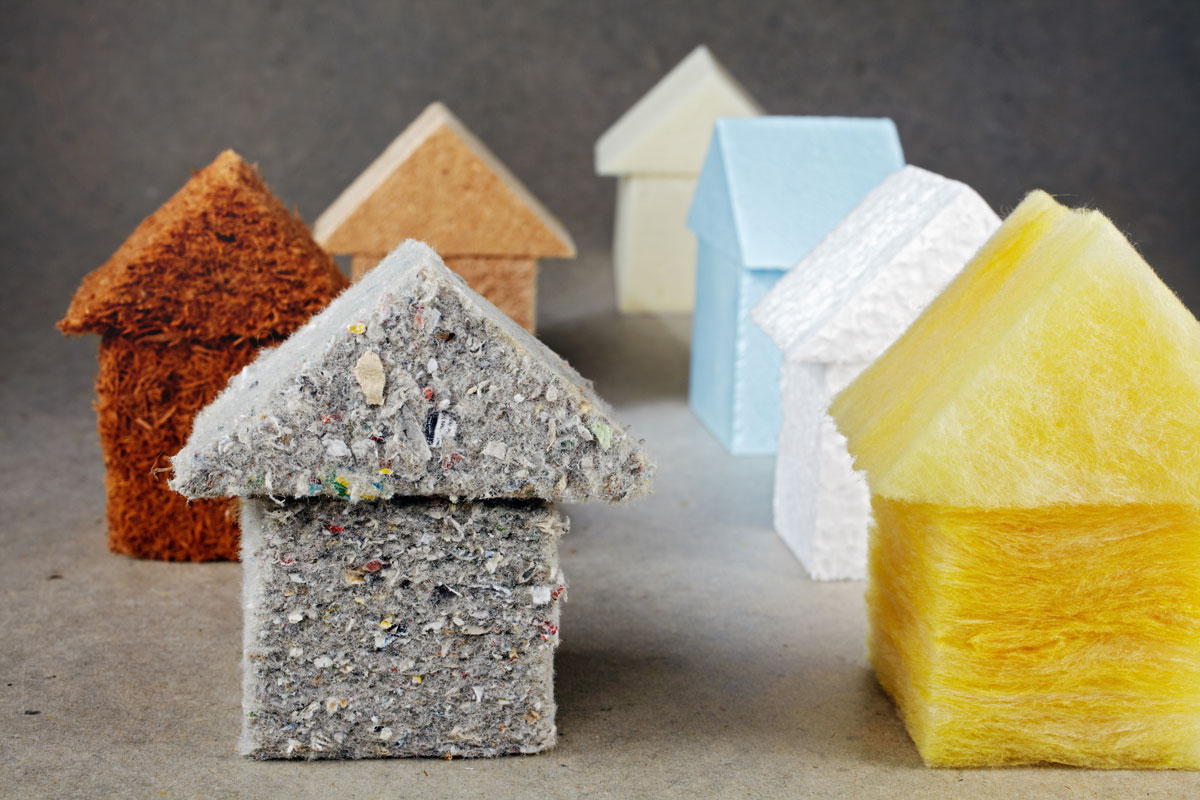
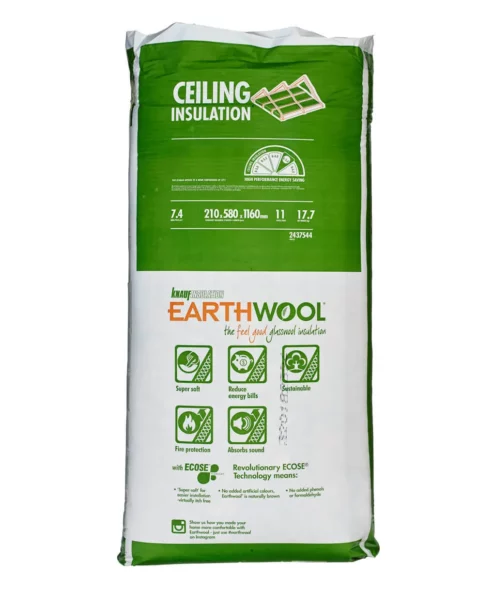
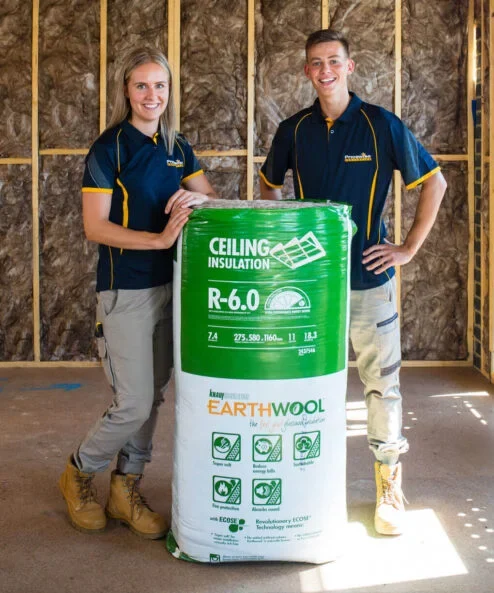
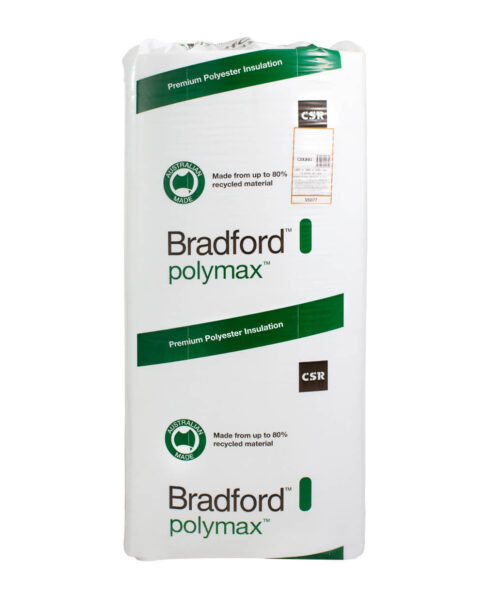
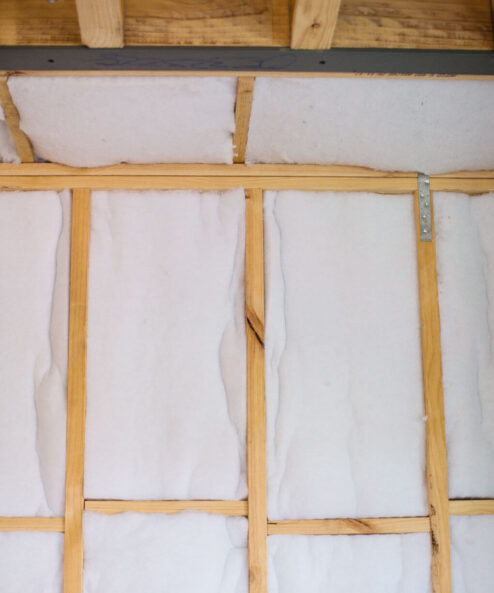
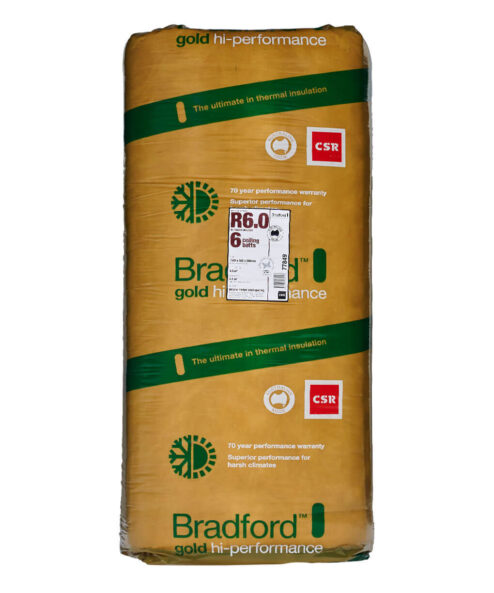
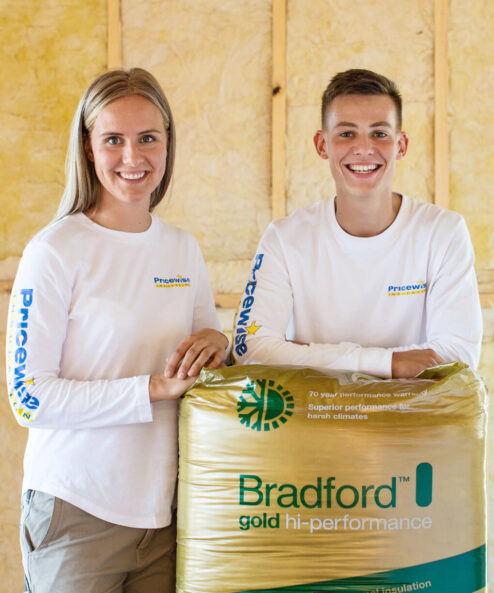
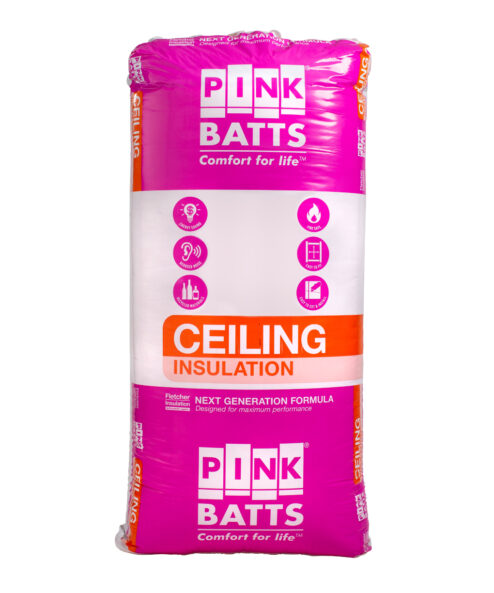
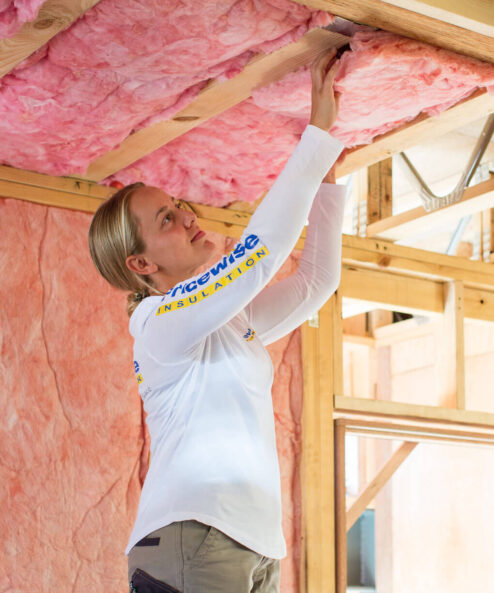
I have a loose panel ceiling in my art studio and I want to insulate the ceiling. Would a blow in be best?
Hi Linda,
Thanks for your question. We would recommend installing polyester insulation batts or Earthwool Insulation Batts. We wouldn’t recommend using blow in insulation since this will fall down any time that a panel is moved. Please do not hesitate to contact our team on 1300 729 639 if you have any further questions. Cheers!
My house was insulated with cellulose blow in insulation many years ago but has settled and reduced in thickness, thus reducing the insulation level. Can I top this up with more celluose to the top of the joists or does the old cellulose fibre have to be removed first?
Hi Doug,
Thanks for your question. This really depends on the condition of the existing insulation. If the existing blow-in insulation is in good condition then you can simply install a layer of insulation batts on top. Here’s a link to one of our videos which explains this in detail: https://www.youtube.com/watch?v=Ki3m5f9gaIU.
Cheers,
Christa
I have a heritage home with timber and pressed metal ceilings. Which would be the best option to insulate for sound on the roof and in the roof cavity and improve internal temperature levels in the home? Rockwool, Sheep’s wool, blow in or some other type of insulation.
Hi Arthur,
Thanks for your question. This really depends on your budget and where you live in Australia. We typically recommend R4.0 or higher for the ceilings, as outlined in this blog post. If you are looking for an acoustic product, then we’d recommend installing R4.0 Earthwool Sound Shield Insulation or a thicker product such as R5.0 or R6.0 Earthwool Ceiling Insulation. Although these products are not rated as acoustic, their density and thickness does help to reduce the transfer of noise.
Please do not hesitate to contact us on 1300 729 639 if you have any further questions.
Kind regards,
Christa
Can I have a Quote for roof insulation pls
Hi Felicity,
Please send an email to sales@pricewise.com.au with further details about the project and our team would be happy to provide you with a quote. You can also shop online for roof insulation here.
Kind regards,
Christa
Highset brick structure, rectangular in shape, measuring about 15m x 10 m. I already have silver batts in the ceiling.
Hi Ossie,
If you have foil under your roof lining, you can look at installing ceiling insulation batts on top of your plaster ceiling to improve the energy efficiency of your home.
Feel free to give us a call on 1300 729 639 and we would be happy to assist you further.
Warm regards,
Felicity